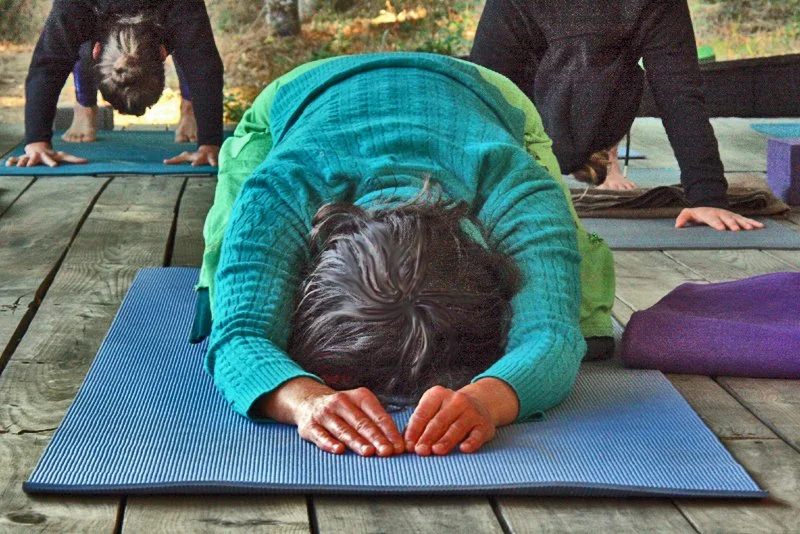Yoga as an ancient somatic practice?
Yoga as an ancient somatic practice bridges modern somatic movement therapy with thousands of years of embodied wisdom. It is considered a somatic practice because it involves directly engaging and sensing the body to promote awareness, healing, and integration of bodily experiences. The term "somatic" relates to the body as experienced from within, emphasizing internal awareness and feeling.
Balasana - Child’s Pose.
Yoga teaches us how to focus on body awareness. We are encouraged to develop mindfulness of physical sensations, breath, and movement, which can foster a deep connection between mind and body. In yoga we learn as we experience. We explore and observe bodily sensations and breath, which promotes more sensitive and subtle awareness.
When we integrate movement with breath, we can tune into our physical and emotional states. Techniques like pranayama (breath practice) and gentle movements can help us to cultivate mindfulness, and a sense of deep relaxation. When we start to experience, and familiarise ourselves with a calm, regulated nervous system, we are better able to self regulate in more challenging situations.
Somatic movement, and mindful breathing can hep release stored tension, improve body-mind integration, and support nervous system regulation. I prefer to teach one to one sessions, or small group classes in order to adapt the practice to individual needs, and allow time and space for internal sensing and self awareness to develop.
In essence, yoga's focus on cultivating a mindful, embodied experience makes it a rich somatic practice—one that prioritizes bodily perception as a pathway to health and well being.
Balāsana or Child’s Pose (pictured) is a foundational yoga posture that offers both physical and nervous system benefits, making it especially powerful as a somatic practice. Physically the posture encourages spinal decompression, and release for the hips and pelvis. The neck and shoulders are able to soften and release, and the digestive organs receive gentle stimulation. This posture activates the parasympathetic nervous system, the ‘rest and digest’ function. With gentle folding inwards, and resting the forehead, the inward, womb-like posture can soothe feelings of anxiety, overwhelm, or over stimulation. Like a lot of yoga postures, Balāsana supports interoception (Inner Awareness). We are literally, physically turning inwards and encouraged to tune into our breath, heartbeat, muscle tone and internal sensations.


